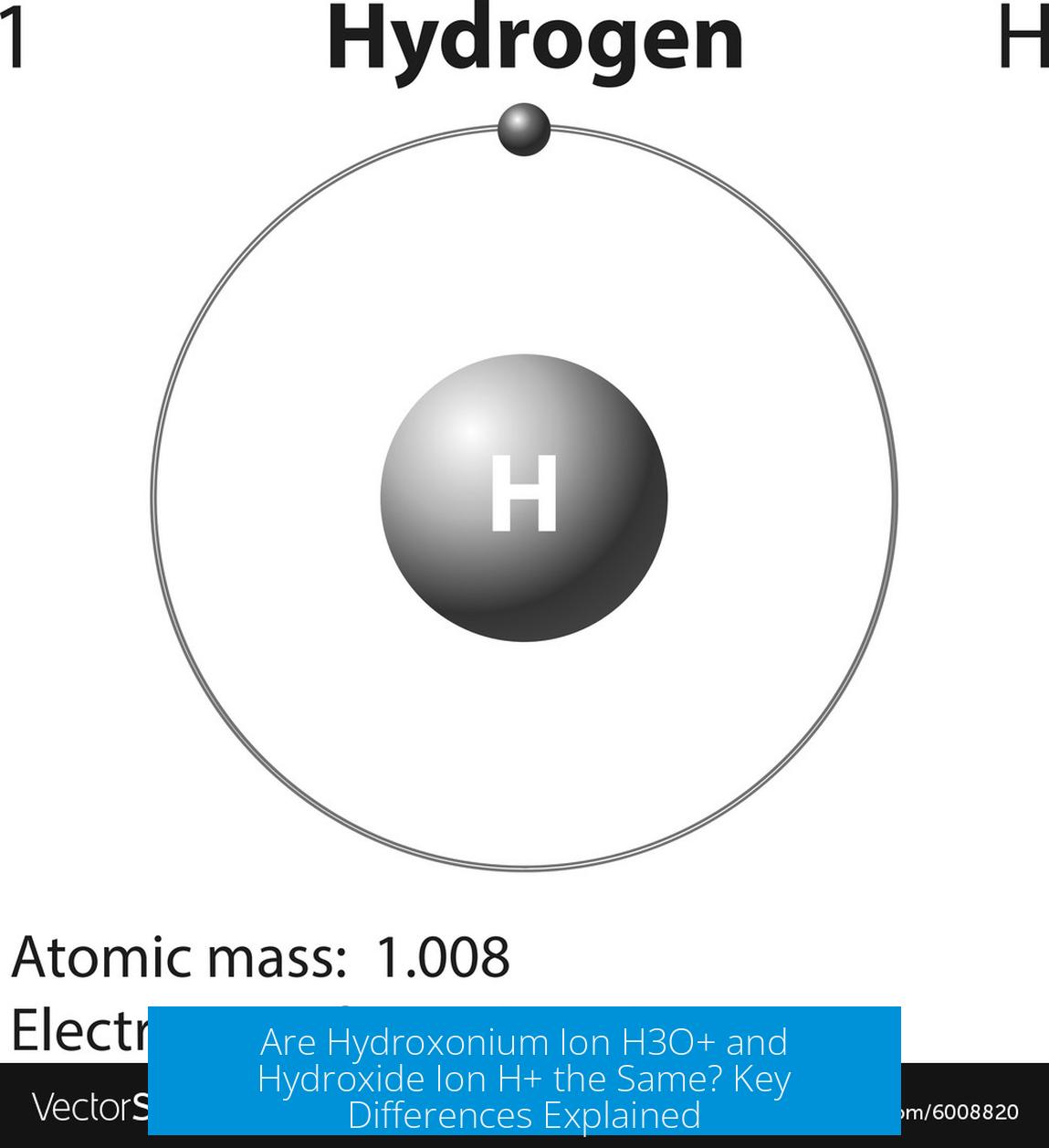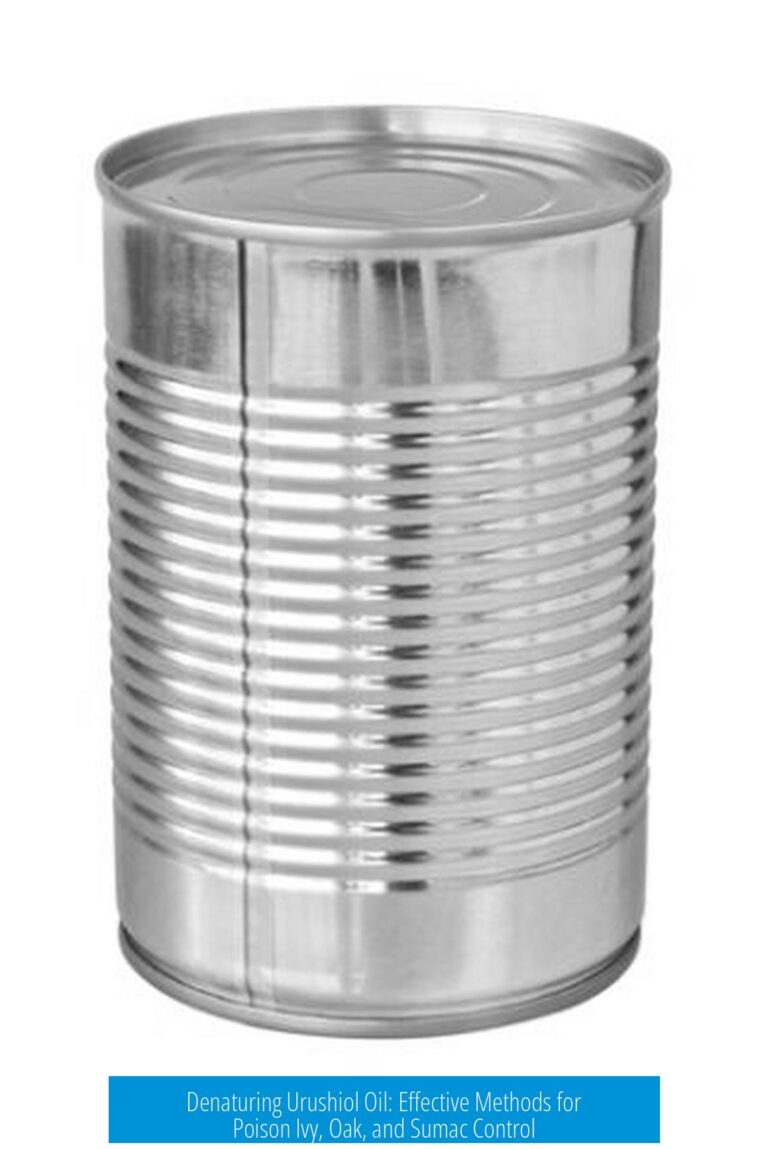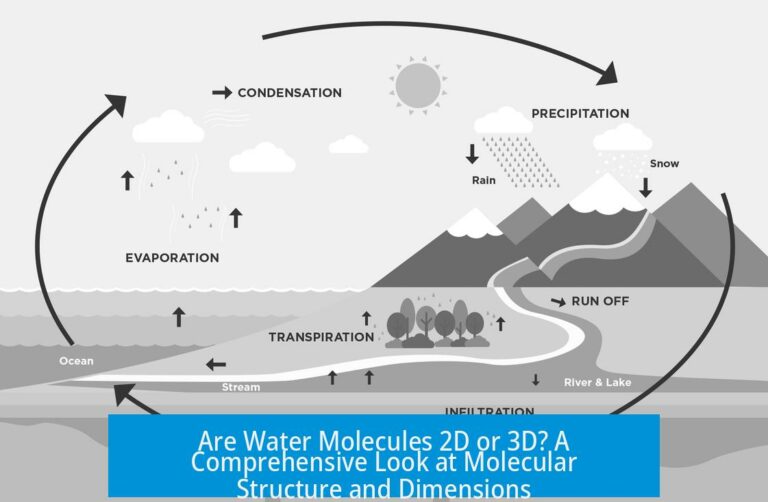Are Hydroxonium Ion (H3O+) and Hydroxide Ion (H+) the Same?
The hydroxonium ion (H3O+) and the hydroxide ion are not the same species. In fact, H3O+ is a positively charged ion formed when a proton (H+) associates with a water molecule, whereas the hydroxide ion (OH−) is a negatively charged ion representing the conjugate base of water. Furthermore, the notation “H+” refers to a proton, which does not exist freely in aqueous solution but always as a hydrated species such as H3O+.
Clarifying the Nomenclature of Hydrogen-Containing Ions
Understanding the terms involved is essential to answer the question clearly.
- Hydronium ion (H3O+): A water molecule bound to an extra proton, giving it a positive charge.
- Hydroxide ion (OH−): A water molecule that has lost a proton, acquiring a negative charge.
- Proton or hydrogen cation (H+): A bare proton, effectively a hydrogen nucleus without electrons.
- Water molecule (H2O): The neutral solvent molecule where these ions exist.
Note that the term “hydroxide ion H+” seen in the question misrepresents the species: hydroxide is actually OH−, with a negative charge. The “H+” notation only refers to a proton or hydrogen cation, not hydroxide.
Difference Between H3O+ and OH−
H3O+ and OH− carry opposite charges and represent acid and base ions, respectively, in aqueous solution.
| Ion | Chemical Formula | Charge | Role in Water |
|---|---|---|---|
| Hydronium ion | H3O+ | +1 | Conjugate acid; formed by protonation of water |
| Hydroxide ion | OH− | -1 | Conjugate base; results from deprotonation of water |
The hydroxide ion ((OH−)) is produced when water loses a proton, while the hydronium ion ((H3O+)) results from water gaining a proton. These ions are central to the acid-base chemistry of aqueous solutions but have distinct identities.
The Actual Nature of H+ in Water
The hydrogen cation (H+) is a bare proton with no electrons and an extremely high charge density. In reality:
- H+ does not exist freely in aqueous solution. Due to its charge and small size, free protons bond immediately with water molecules.
- Hydronium ion (H3O+) forms when a proton associates with a water molecule:
H2O + H+ <—> H3O+
This equilibrium reflects proton transfer between water and hydronium ions. The hydronium ion represents the proton “residing” on a water molecule, creating a stable positive ion.
Hydronium ion exists as a simplified formula representing a proton coordinate-covalently bonded to water. In reality, the proton is shared between several water molecules creating dynamic hydrated clusters—sometimes termed Zundel (H5O2+) or Eigen (H9O4+) ions. Still, H3O+ is the common representation in acid-base reactions.
Understanding Acid-Base Reactions with These Ions
In aqueous chemistry, the shorthand “H+” is ubiquitously used but represents H3O+ ions rather than free protons. For example:
HNO3 + H2O <—> NO3− + H3O+
When nitric acid dissociates, it donates a proton to water forming nitrate ion (NO3−) and hydronium ion (H3O+).
Similarly, neutralization reactions illustrate the interaction between hydronium and hydroxide ions:
H3O+ + OH− → 2 H2O
Here, the positively charged hydronium ion and negatively charged hydroxide ion combine to form neutral water.
The reaction serves as the basis for pH concepts and the acidity or basicity of solutions.
Why Use the H+ Symbol If It Does Not Exist Freely?
The notation “H+” originates from simplifying acid-base reactions to emphasize proton transfer. Chemists write:
HA <—> A− + H+
where HA is an acid, and A− its conjugate base. This shorthand is practical but does not reflect the actual hydrated state of the proton in water.
Introducing H3O+ provides a more accurate picture but can complicate early teaching. Hence, students often first learn the “free proton” concept, then progress to more realistic hydronium ion descriptions.
Misconceptions and Common Confusions
- Confusing H+ (proton) with hydroxide ion OH−. They have opposite charges and functions.
- Assuming free protons exist in solution; they always associate with water molecules.
- Thinking that hydronium ion and proton are two unrelated species; in water, the proton is always hydrated, causing hydronium ion formation.
Summary of the Hydroxonium Ion and Hydroxide Ion Relationship
Both ions exist in water but represent different chemical entities:
| Hydronium Ion (H3O+) | Positively charged; formed by protonating water; corresponds to the proton’s real aqueous form. |
| Hydrogen Ion (H+) | A bare proton; does not exist freely in aqueous solution; shorthand used symbolically for hydronium ion. |
| Hydroxide Ion (OH−) | Negatively charged; formed from water losing a proton; chemically distinct from H3O+ and H+. |
Therefore, hydroxonium ion (H3O+) and hydroxide ion (OH−) are fundamentally different ions, and H+ does not denote hydroxide but rather the proton that forms hydronium ions in water.
Educational Perspectives
Educational systems differ in how they introduce these concepts:
- At basic levels, write H+ as shorthand for proton transfer.
- At advanced levels, emphasize the real chemical species: hydronium ion H3O+.
This approach helps avoid confusion, equipping students with a better grasp of acid-base chemistry in aqueous solutions.
Key Takeaways
- The hydroxonium ion (H3O+) and hydroxide ion (OH−) differ in charge, structure, and role in water.
- H+ denotes a proton, not hydroxide ion; in aqueous solutions, it forms hydronium ions by associating with water.
- Hydronium ion is the actual representation of the proton in water; free proton does not exist due to high reactivity.
- Hydroxide ion carries a negative charge and forms by water losing a proton; it is distinct from H3O+ and H+.
- Using “H+” is a simplified notation in acid-base reactions but chemically corresponds to hydrated proton species.





Leave a Comment